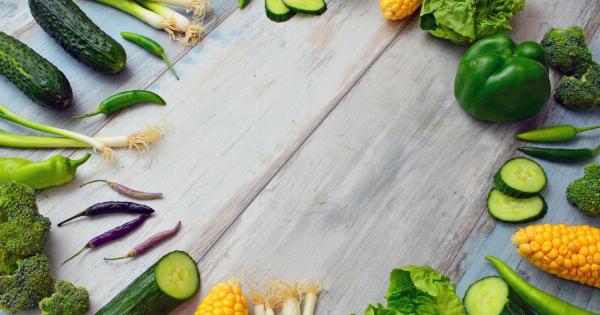Broccoli, a member of the cruciferous vegetable family, has gained significant popularity in recent years due to its numerous health benefits.
This green, tree-like vegetable is not only rich in vitamins and minerals, but it also boasts impressive anti-cancer properties that make it a valuable addition to any diet. In this article, we will explore the cooking times of broccoli, its anti-cancer properties, and how you can incorporate it into your meals to reap its nutritional rewards.
The Benefits of Cooking Broccoli
Cooking broccoli enhances its nutritional value by making certain compounds more bioavailable.
While raw broccoli retains many nutrients, the heat from cooking can break down tough fibers, making it easier for your body to digest and absorb its beneficial compounds. However, it’s important to balance cooking time to avoid excessive nutrient loss.
Cooking Methods and Their Effects
There are several popular cooking methods for broccoli, each with its own impact on nutrient retention and texture. Let’s take a closer look at these methods and their effects:.
Steam: Quick and Nutrient-Preserving
Steaming broccoli is one of the best methods for preserving its nutrients.
Steaming for around 5 minutes ensures that the vegetable retains its vibrant color, crisp texture, and most of its vitamins and minerals, including vitamin C, folate, and potassium.
Boil: Simple but Nutrient-Loss Prone
Boiling broccoli is a common cooking method, but it can lead to significant nutrient loss if not done correctly. Boiling the vegetable for too long can cause water-soluble vitamins like vitamin C to leach into the cooking water.
To minimize nutrient loss, boil broccoli for a maximum of 5 minutes and don’t use excessive water.
Sauté: Quick and Flavorful
Sautéing broccoli in a skillet with a small amount of oil can elevate its taste while preserving most of its nutrients. This method only takes a few minutes and allows the vegetable to develop a slightly caramelized flavor.
Be mindful of the oil quantity to keep the dish healthy.
Roast: Intensified Flavor and Slight Nutrient Loss
Roasting broccoli brings out its natural sweetness and imparts a unique flavor profile.
While this method may result in a slight loss of vitamin C and some antioxidants due to longer cooking times, the caramelization and nuttiness of the roasted vegetables can be well worth it.
Microwave: Quick and Nutrient-Friendly
Microwaving broccoli is an efficient option when time is limited. It exposes the vegetable to minimal heat and retains most of its nutrients.
Keep in mind that the texture may be softer compared to other cooking methods, but the speed and nutrient preservation make it a convenient choice.
Broccoli’s Anti-Cancer Properties
Broccoli contains various compounds that are linked to its potent anti-cancer properties. These compounds, known as glucosinolates, are responsible for the vegetable’s pungent odor and bitter taste.
When broken down during digestion, glucosinolates produce biologically active compounds that have been extensively studied for their anticancer effects. Sulfurophane is one of the most well-known compounds found in broccoli and has shown promising results in inhibiting the growth of cancer cells.
Maximizing Health Benefits
To maximize the health benefits of broccoli, it’s important to store, prepare, and cook the vegetable correctly:.
Storage Tips
Store broccoli in the refrigerator, preferably wrapped in a damp paper towel or bag, to maintain its freshness and nutrient content. Consume it within a week to ensure optimal flavor and texture.
Preparation Tips
Before cooking, remove any leaves and tough stems from the broccoli. Rinse it thoroughly under cold water to remove any dirt or debris. Cutting the vegetable into small florets will also ensure even cooking.
Incorporating Broccoli into Your Diet
Broccoli’s versatility makes it easy to incorporate into various dishes. Here are some ideas to include this nutrient-packed vegetable into your diet:.
1. Stir-fries and Pasta Dishes
Add broccoli florets to your favorite stir-fry or pasta dish to introduce a vibrant color, crunch, and nutrition. Sauté it with other vegetables or proteins and season with herbs and spices for a flavorful meal.
2. Salads and Bowls
Include raw or blanched broccoli florets in salads and bowls for an extra dose of fiber and vitamins. Combine it with other colorful vegetables, proteins, and a light dressing to create a refreshing and nutritious meal.
3. Soups and Stews
Add broccoli to your homemade soups or stews for a boost in nutrients. Simmer it gently to retain its color and texture, or purée it for a creamy consistency.
4. Roasted Side Dish
Roasting broccoli in the oven with a sprinkle of olive oil and your choice of seasonings can transform it into a delectable side dish. The caramelization from roasting enhances its flavor while preserving most of its nutrients.
Conclusion
Broccoli is not just another leafy green; it is a powerhouse of nutrition and anti-cancer properties. Understanding its cooking times and methods can help you retain its health benefits while enjoying its delicious flavor and versatile texture.
Whether steamed, boiled, sautéed, roasted, or microwaved, broccoli is a vegetable that deserves a regular place on your plate for its impressive nutritional profile and potential cancer-fighting properties.





























